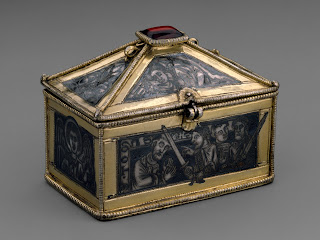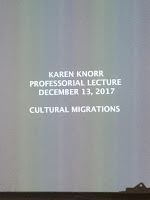Reliquary Art
Reliquiae - (Latin) Things left behind; remains.
Throughout my travels across Europe and the United States I have happened upon an array of reliquary art containing holy relics, be these in churches, museums or the street. I did not intentionally set out to discover these objects as I do not have an allegiance to a prescribed faith (despite my mother's best intentions!) But somehow I was drawn to these objects and started to consider the importance culture and society places on the rituals in preserving memories. I was often sceptical of the authenticity of these religious objects but casting judgment aside, I began to appreciate the intricacies of the craft and the messages associated with these caskets. Essentially, the objects embodied deep emotions and for the memories to be made more 'real' they must then be 'objectified' in physical things we can see and touch. The objects act as a connection between this world and that of our ancestors. They evoke a missing presence and help to connect us to be closer to those absent (loved ones or figures of high regard or divine) and especially the dead. The talisman effect of these objects took on a significance that I could not ignore and started to think how these ritualistic, ceremonial artefacts were important to my life and to my work as an artist. As we experience bereavement and loss we find ourselves placing importance in 'treasured memories'. These can take a multitude of forms and I am questioning how I can interpret and develop my embodiment of memories within the objects I make.
To start this process I reflected on what attracted to me to the reliquaries I observed on my travels. These included: the receptacles' ornateness, the richness of materials, the craft production, the symbolism, the space they inhabit (display) and the connection to the viewer.
 |
| Reliquary Casket with scenes from the Martyrdom of Saint Samuel Becket, Circa 1173-80, Gilded silver with niello and a glass cabochon set over a tinted foil The Metropolitan Museum, NY, USA. |
Looking at the casket containing a relic of the martyred English saint Thomas Becket (archbishop of Canterbury 1162-1170 and canonised in 1173), the simple but carefully designed container combined with detailed pictorial narrative within the side and top panels creates an exquisite artefact. The saint's soul ascending to the heavens is symbolised by a beautiful illustrated panel depicting an angel cradling a small child. The large(ruby)gem set atop the apex of the pyramid lid gives a rich, refined and precious elegance. It is a casket to be held in high regard and reverence. I want to capture this quality and symbolic reverence in my reliquary work. To make myself and my ancestors as familial Gods.
 |
| Farnham Shroud, 2017 |
'Farnham Shroud' is a mono print of my (saintly) younger self on rice paper. The encased, fragile, blurred image has echoes of the Turin shroud but is also a homage to my former self, forming a sanctity of the childhood innocence.
| Turin Shroud |
To take this work forwards I am beginning to focus on capturing likeness and presence in my work. I will undertake a series of experiments that give a physical presence in the art of preserving memories. I will particularly give focus and prominence to the inconsequential (materials and objects) which will symbolise my connection with the past. In a sense I will be creating a museum of me.


Comments
Post a Comment